1947 Delahaye 135 MS Figoni et Falaschi Narval Cabriolet Wins Best in Show at 2024 Amelia Concours D’Elegance
The work of noted French coachbuilder Figoni et Falaschi has dazzled auto salons and concours since its founding in 1935. Today, its work shone yet again, as this 1947 Delahaye 135 MS Figoni et Falaschi Narval Cabriolet took home Best in Show at the 29th annual Amelia Concours d’Elegance in Florida.
Owned by Dana Mecum, founder of Mecum Auctions, this flamboyantly designed Narval first graced the public with its presence at Delahaye’s stand at the 1947 Paris Auto Salon. (Narval is French for Narwhal, a name earned by the car’s flowing, tapering lines and, of course, the protrusion atop its grille.) The Delahaye was then purchased by Charles Trenet, a singer known as the “French Frank Sinatra.” The car then crossed “La Mer” with the singer, says Mecum: “He came to the U.S. on tour in the early ‘60s, and the car ended up staying here.”
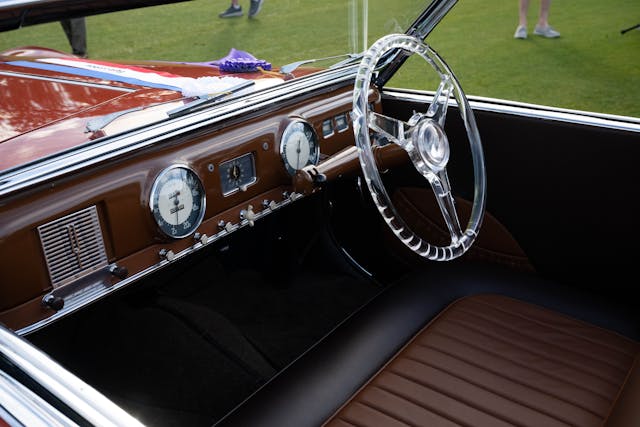
One of seven made, this Narval arrived as the era of decadent coachbuilding was drawing to a close. The Narval represents an evolution from prewar designs toward more modern aesthetics but retains Figoni et Falaschi’s characteristic organic lines, which embody motion and speed even when the vehicle is standing still.
Designer Giuseppe Figoni (Falaschi handled the operations of the business) famously worked with some of the most revered automotive brands in the 20th century: Talbot, Alfa Romeo, Delage, and of course, Delahaye. Cars wearing bodies designed by Figoni have taken home trophies at Villa d’Este, Pebble Beach, and Amelia Island. His 1937 Talbot-Lago T150-C-SS Teardrop Coupe holds the record for the most expensive French car ever sold at auction, at $13,425,000.
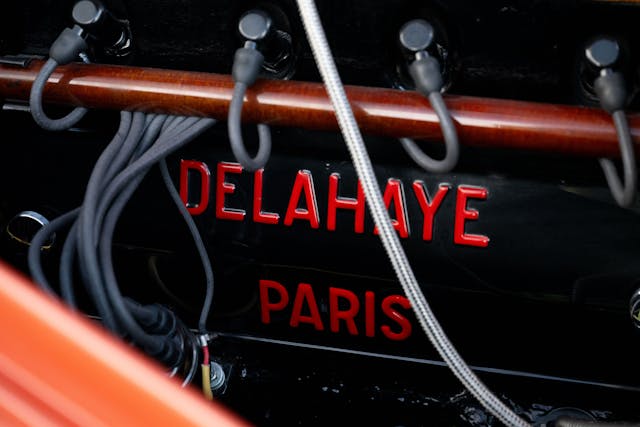
Delahayes bodied by Figoni et Falaschi rarely cross the auction block, but when they do, they are seven-figure cars: This weekend, a less extravagant 135 MS Coupe from 1938 sold for $1,325,000 at Broad Arrow’s Amelia auction. Few postwar cars such as those from the Narval series have sold at auction recently.
Beneath the bodywork of this Figoni et Falaschi Narval resides the chassis of a Delahaye 135, featuring a 116-inch wheelbase with independently sprung front suspension and a live axle held aloft by semi-elliptic springs at the rear. The car is powered by an overhead-valve, 3.6-liter straight-six engine that is fed by three Solex downdraft carburetors and makes 125 horsepower. The transmission is a four-speed affair, with a gear pre-selector mounted at the steering column. The front and rear wheel covers hide 17-inch Rudge center-locks.
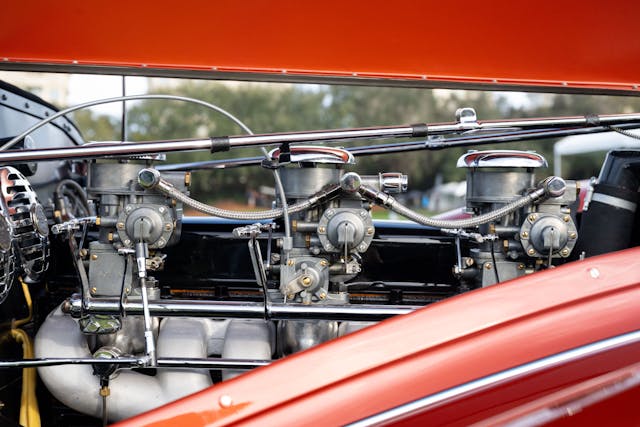
“I restored this myself a couple of times, and then I realized I needed professional help,” says Mecum, standing in front of his Delahaye on the concours lawn at Amelia Island. “I hired Chris Charlton from Classic Car Services in Maine and he did it perfectly—he really did it right.”
Mecum adds that he’s put about 100 miles on the car since the restoration and intends to put it to good use going forward. “We’re excited to receive Best in Show today at Amelia—and now we’re going to drive it.”
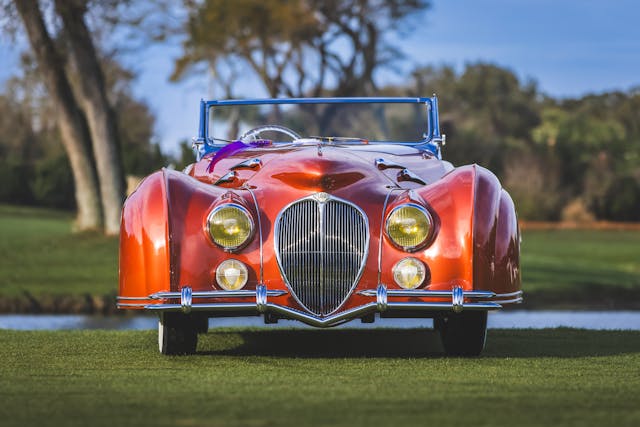
***
Check out the Hagerty Media homepage so you don’t miss a single story, or better yet, bookmark it. To get our best stories delivered right to your inbox, subscribe to our newsletters.
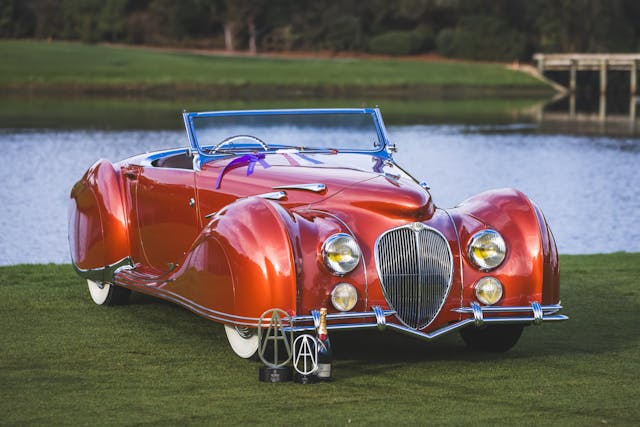


Absolutely beautiful and worthy of its best in show status. Figoni et Falaschi is one of my favorite coachbuilders. Marvelous designs.
I agree that this Delahaye was worthy of its best in show status. But beautiful? What was Figoni et Falaschi thinking when they drew that “hognosed snake” snout? While I love the rest of the car, I just can’t unsee that proboscis.
There are several defects , the front wings appear to have a slightly profile , the right hand side of the bumper is out of alignment , lower chrome section is lower than the left hand side.
What were those judges thinking? They should have had you there.
This reminds me of the times I used to show my restored car in Corvette shows. Often some jerk with his girlfriend would look over a beautiful car until he finds some flaw and points it out hoping to impress her. It seemed to never fail that I would watch them leave in a rusty old car that you could give away.
Beautiful color and beautiful interior. Only complaint is that clear steering wheel, what gives?
Around the early 1940’s “plastics” were considered exotic, expensive, and they were finally practical to produce. Some plastics were very durable (think bell telephones). In the 1970’s “cheap plastics” took over car interiors and they got a bad reputation.
What a magnificent automobile!
Drive it now he says – I hope so!! Static display pieces are dead, an affront to those who built the car originally.
You are correct. Like anything, there are variations in plastic. The wheel looks like Lucite, a
strong acrylic often used for mid-century modern period chairs. But age is age, and steering wheels have stresses. I would think it has been replicated and a wonderful job it is.
May I have a few mile ride in your car, Mr. Mecum?
I’m in SW Florida.